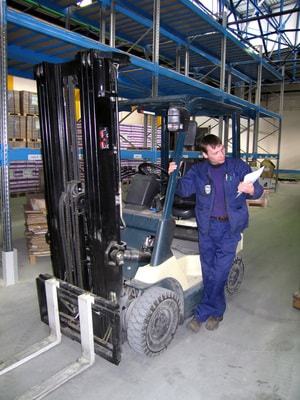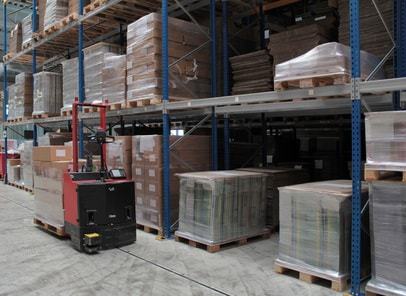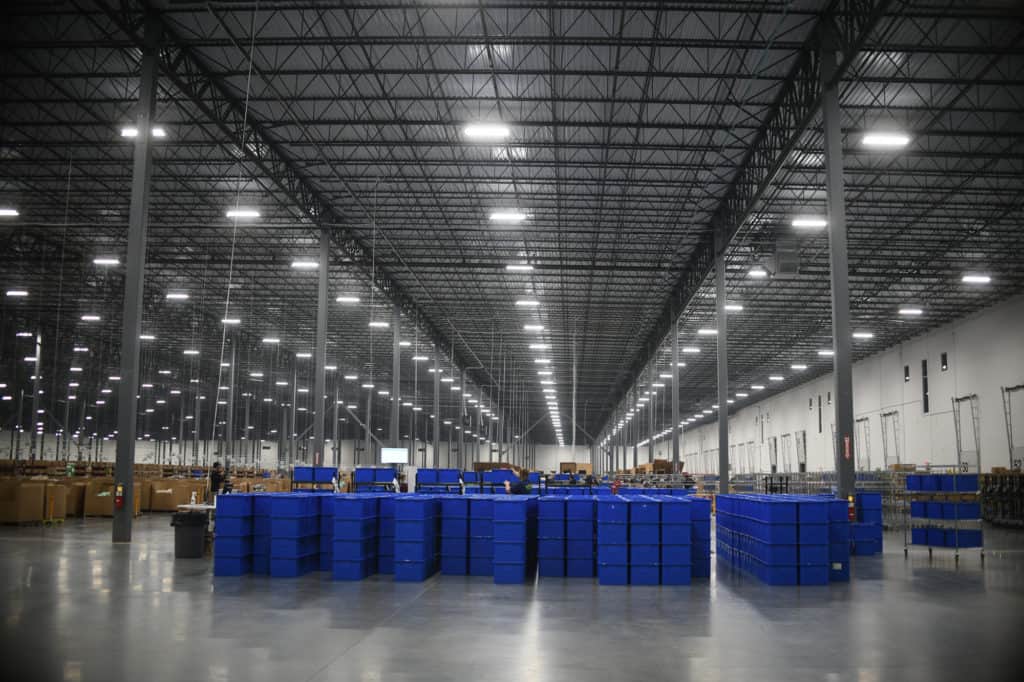As we move forward in the digital age, it’s becoming increasingly important for businesses of all sizes, from mom and pop shops to large corporate entities, to streamline their warehouse order picking practices. This sentiment holds especially true for organizations who rely on warehouse staff or automated equipment to fulfill orders. After all, today’s consumers have grown accustomed to receiving their goods in a super-speedy manner.

E-commerce behemoths such as Amazon have forever changed the perception of how orders should be fulfilled, both in terms of time and accuracy. But, while your company might not be promising same-hour delivery, these changing expectations are not to be ignored– in fact, they should be shaping your ever-changing warehouse order picking strategy.
Furthermore, the COVID-19 pandemic is straining supply chains around the world, disrupting business activities and impacting both manufacturers and consumers alike. The aftershocks of this era will also shape warehouse order picking activities going forward and guide warehouse managers in the design of agile and more resilient strategies for dealing with possible future occurrences.
Because we’re your ally in all things warehouse systems and types, we’ve compiled this best practices guide to guarantee that your business is putting its best foot first as it operates in the fluid world that is order fulfillment.
In this guide, we’ll discuss:
- What is warehouse order picking?
- The different types of warehouse order picking
- Tried and true methods used in order picking
- Best equipment for warehouse order picking
- Best hiring practices for warehouse order pickers
- Best practices for improving warehouse picking productivity
- Further reading on warehouse order picking
What is warehouse order picking?

Warehouse order picking is a simple concept, but in practice, it can be quite complex. Simply put, warehouse order picking refers to the necessary labor and parts involved in pulling an item from inventory to fulfill a customer’s order. It’s a process that might sound like the most uncomplicated aspect of your business, but when you crunch the numbers and realize that it amounts to an average of 55% of operational costs within any given distribution center, budget-conscious warehouses quickly find that ineffective systems could stop them from further innovation.
If your business fulfills orders, it’s key that you develop a warehouse order picking strategy that emphasizes speediness, order pulling accuracy and organization, as well as investments that might aid the three points as your demand shifts in the future.
Generally speaking, order picking and order selecting falls entirely under the umbrella of warehouse logistics, but that doesn’t mean your current practices must always be assessed by the decision-makers at the top. For instance, if your competitors are undercutting you in terms of fulfillment time or you have received public online complaints concerning order accuracy from customers, the first factor you need to reassess is your warehouse order picking process.
By streamlining your business’ methodology, staff and technology, you can:
- Offer faster order fulfillment times to customers
- Invest in technologies that can promote automation
- Promote accuracy in your orders
- Retain trustworthy, able and happy warehouse staff
- Minimize cost and maximize asset utilization
- Save precious time and money that will help you focus on the future of your business
Though best practices for warehouse order picking are not “one-size-fits-all,” the right organization, communication, smart investing and good common sense can help you make the most of your fulfillment process.
The different types of warehouse order picking
Warehouse order picking strategies must be customized to fit your business’ unique fulfillment needs. Selecting an overarching plan from the most used categories below will help you to develop a framework if you are reworking your current order picking plan — or even starting from scratch: 
- Zone Picking — Zone picking often is put into place when the warehouse is compiling orders that contain multiple components and in large warehouses to reduce walk times for individual pickers. The inventory is organized into “zones” where an order picker or automated piece of equipment is stationed with the unique SKUs found only in their zone. To fulfill an order, bins or totes move through each zone, with associates simultaneously collecting products for multiple orders. Once a bin gets to a zone, the picker puts in the required number of SKUs to fulfill several orders at once. The bin passes from zone to zone until all items are collected.
- Discrete Picking — In discrete picking, instead of the worker being assigned to a specific “zone” in the warehouse, they compile each piece of necessary inventory in the order, one line at a time. This plan might work well for a warehouse with a small team that isn’t inundated with complex customer orders. While it may take more time in the pick area, the tradeoff is that it minimizes the number of touches to ship an order. An order can be picked with one touch, without having additional sorts in a discrete picking methodology.
- Batch/Multi-Order Picking — This works well for businesses that are interested in picking up the pace in regards to order fulfillment. Batch picking calls for managers to assess current orders for popularity and place them into batches by their SKU. From there, pickers are in the best location of the warehouse to get orders fulfilled as quickly as possible. Batch picking works especially well for e-commerce businesses with somewhat predictable ordering trends, like those specializing in food and apparel.
- Cluster Picking — Efficiency is the name of the game for cluster picking, which involves a single picker compiling multiple orders at a time, usually dealing with a variety of SKUs. This method can give you a serious leg-up when it comes to speed, but you will need to integrate special technologies and resources to make it successful in your warehouse, such as a sharp, well-trained picker, a mobile cart, automated equipment and voice solutions.
- Wave Picking — Wave picking makes a whole lot of sense if your warehouse is grappling with high fulfillment demand coupled with plenty of diverse inventory. In wave picking, a single picker prepares each order, line-by-line, but instead of simply being compiled in the number that it was placed, all warehouse orders are first assessed to maximize shipping and picking operations. This strategy allows “waves” of orders to be shipped and compiled throughout the day, prioritized by time and importance.
In addition to the five most common picking types, many companies will combine two or more to better fit the unique needs of their warehouse. For instance, managers may integrate the successful points of the above to make a zone-batch picking, zone-wave picking or zone-batch-wave picking plan that fits their changing needs best.
Tried and true methods used in order picking
When it comes to implementing an order picking process that works best for your warehouse, picking one or more of the above types is key, but you will need to consider a host of supporting factors first. From available space to strategies to comprehensive training practices, a full order picking re-vamp entails an investment in both time and sometimes capital in order to pull off a change successfully.
Let’s take a look at how you can do this:
- Ensure that your production schedule allows for 100% availability of inventory — Offering competitive and guaranteed shipping dates to your customer must be a standard and predictable part of your business. In order to make this a sustainable reality, you must have a minimum level of inventory per day, as well as an effective communication procedure for when you might be running low on an item.

- Plan your picking routes carefully — Just because your warehouse’s picking routes improved your productivity when they were first implemented doesn’t mean that they shouldn’t face constant scrutiny as your business grows. Require your warehouse manager or picking specialist to establish routes that eliminate backtracking, which can cause major slowdowns. Also, keep in touch with your pickers to better understand the factors that may be slowing them down.
- Implement velocity-based slotting — Your warehouse manager might be a whiz when it comes to organizing your inventory with the trusted warehouse slotting method, but have you made them aware of your current product velocity analysis? Those working behind a desk may be aware of this information, but that doesn’t mean that everyone notices how often a product sells, specifically if your business’ warehouse is a booming one. This means that, based on its specific velocity, a product might be sitting in a “prime slot,” even though it hasn’t been picked in days. Make the appropriate manager aware of each product’s velocity so that they can make the necessary, time-saving changes in your warehouse’s overall organization.
- Invest in smart automation — Smart automation is the future; its inherent qualities promote more accurate and time-efficient picking, all in ways that can be completely customizable to your business. This investment can be a big decision, but it is much less overwhelming — and a lot clearer — if you include all warehouse managers and supervisors in the conversation, instead of simply keeping it between a salesperson and a boardroom. That way, you can assess all factors to select what smart automation equipment best fits the needs of your growing business.
- Keep records of error data — It’s easy to blame picking errors on negligent employees, substandard equipment or inefficient shipping companies, but coming to a quick conclusion might mean that you are hastily selecting a “fall guy.” Instead, keep thorough records of all error data, including missed time targets, and properly analyze it to get a better idea of who is to blame. If you have a hardworking, honest staff, for instance, it might be time to implement a velocity-based slotting plan, integrate smart automation or re-assess your inventory routes.
The best equipment for optimized warehouse order picking
You might have invested in the best and brightest staff to establish your warehouse’s order picking strategy, but that doesn’t mean that it can’t all fall apart due to faulty, out-dated or unnecessary equipment.
Here’s a look at a few commonly used types of order picking equipment that can help to optimize your warehouse’s picking processes:
- Mobile Robots — Over the last few years Robots have quickly increased their level of intelligence and flexibility as machine learning and artificial intelligence (AI) have been built in. The result of these innovations is a new style of robot that is suited to work side by side with warehouse pickers. Modern warehouse robots are designed to complement traditional picking processes. These robots have been designed to operate on the floor in the same spaces where associates are at work, often in collaboration with those associates. In this model, the robot is assigned a task and automatically navigates to a pick location. When it arrives at a location, a picker will pull product from a shelf or carton and place it in a bin or tote on the robot. The robot is then directed by the software controlling the system to the next pick location until all the items for an order are in the tote and ready for delivery to the pack station. Mobile Collaborative Robots can be very effective for fulfillment centers with a high variety of orders, including a significant number of multi-product orders. Because the robot is responsible for all of the non-value-added travel between tasks, associates on the floor are more productive because they remain in their zone where they are focused on picking items from the shelves.
- Heavy-Duty Equipment — This can include anything from the aforementioned smart automated robots to forklifts that have a larger load capacity than the one you are currently using. Whether or not your warehouse is using either of these tools is beside the point; the main takeaway is a simple one — big capital expense, less manpower and more machinery. Of course, not all facets of a warehouse will — or should — be completely automated, but if the available warehouse picking tools save your company more time and money in the long-run, take advantage of the technologies and order picking machines out there.

- Voice-Picking Equipment — The term “voice picking” refers to the paperless, hands-free system that gives pickers instructions in real-time. This technology is a big one as it allows workers to keep their hands and eyes free as they move about the warehouse. In terms of equipment, voice-picking usually requires a headset and microphone connected to a wearable device along with a manual cart that they pull around the warehouse. A big advantage is that many voice-picking devices are also equipped with multi-modal feedback functions, which allows pickers to communicate necessary information back into your system.
- Barcode Scanners — Barcode scanners have been used for years throughout the field of inventory tracking, but that doesn’t mean the piece of equipment is out-dated. In fact, the newest barcode scanners have cutting-edge features that promote automation throughout the supply chain. Today’s best barcode scanners cut down the possibility of human error, eliminate paper and printing costs, give time-saving information on SKU location and are hooked up to software that automatically analyzes your inventory. For even more efficiency, you can use a mobile put-to-light system in conjunction with barcode scanners and mobile robots to inform pickers of inventory location.
- Weight Scales and Software — Yet another way to reduce errors in the form of under- or over-packaging orders is through implementing electronic weight scales in your warehouse. Weighing the package before it goes out for shipment ensures that the correct items are, in fact, a part of the order. Additionally, the data compiled by the smart weight scales software can help predict changing shipping costs.
Best hiring practices for warehouse order pickers

There’s no question that order selecting and picking are tough jobs, especially considering today’s pickers are under more pressure than ever when it comes to efficiency. Over the past several years some companies dealt with a fair amount of blowback from pickers who were overwhelmed by strict picking quotas. Of course, corporations don’t set out to overwhelm its pickers, which means that faulty hiring practices could be to blame for the bad publicity.
Here are some qualifiers and tips to ensure that your pickers can handle the demanding work:
- The pickers are physically and mentally able to perform work in the long-term — Most successful warehouse picking requires the worker to move from task-to-task in the most timely manner possible. It might not be a trying job when it comes to strategy or innovation, but it is one that requires some physical and mental prowess. Make sure that each prospective employee knows exactly what the job entails in terms of physical expectations, walking speed, lifting requirements and efficiency before you move them forward in the hiring process.
- The pickers understand the job’s low margin for error — Picking is not a job for those who cannot follow directions. This might be a hard thing to determine in the hiring process, but their application, previous experience or general behavior might be good indicators as to just how meticulous they will be in the warehouse.
- The pickers are put through adequate training — If your company is at all interested in precision, it’s key that you supply your picker with the most thorough training possible before you put them on the line, and on-the-job, they should be provided with tools that give them constant feedback.
These might be common-sense hiring techniques, but they are all integral in guaranteeing that the right products get into the hands of your customers in the timeliest fashion possible.
Best practices for improving warehouse picking productivity
Order picking is one of the essential functions of a warehouse operation. Utilizing the right picking methodologies, leveraging technology to streamline processes and following sound hiring practices will go a long way in optimizing your workflows and contributing to the bottom line.
To help you further optimize order fulfillment workflows, let’s take a look at best practices for improving warehouse picking productivity.
Design your warehouse for optimal flow
Each functional area of your warehouse should be designed and positioned to flow from one activity to the next. This design is based on how inventory flows through each area, from receiving to outbound shipment. For instance, goods flow through a typical warehouse this way: Receiving – Storage – Replenishment – Order picking – Sorting – Packing – Shipping.
Such a logical flow of inventory eliminates scenarios in which associates have to double back across areas to perform an order fulfillment activity. Also, each area should be designed to accommodate the expected amount of traffic. Aisles should be wide enough to facilitate the smooth flow of associates and equipment without causing congestion — even during periods of high-volume traffic.
Leverage goods-to-person technology
Reducing the number of people and steps it takes to execute a process reduces the number of errors, and this is particularly true in order fulfillment. Errors during picking leads to unsatisfied customers and returns. Or if detected before orders are packaged and shipped, wasted time and resources in packing and repacking orders.
Goods to person technology (such as AS/RS, carousels and flow racking) reduces the need for human involvement in the picking process. It also cuts down overall travel time, human fatigue and the number of steps required to pick orders, thus speeding up the order fulfillment process. Most importantly, it removes the need for personal interaction during picking activities, a significant benefit as warehouses are implementing social distancing measures to keep employees safe in the midst of the COVID-19 pandemic.
Zone fast-moving SKUs together
Savvy warehouse managers leverage the 80/20 rule to speed up order fulfillment. Essentially, this rule stipulates that 20% of products account for 80% of customers’ orders. As such, zoning high-volume SKUs (i.e., creating a warehouse within a warehouse) is a great way to optimize order picking activities. For one, it reduces travel times because pickers no longer have to travel through the warehouse to pick frequently ordered items.
Ensure that the zone is properly designed and situated to facilitate high-volume traffic and activity. It’s a good idea to position zones containing high-velocity SKUs closer to shipping and receiving areas.
This idea can also be extended to include SKUs that are frequently ordered together, such as shampoo and conditioner, staples and staplers, etc. Placing such items together helps reduce travel time and speeds up picking activities.
Ensure the safety of pickers
Picking and packing require associates to handle items that have been handled by other employees and may still be handled by others within your warehouse.
Automating order picking activities, deploying goods-to-picker technology, redesigning pick zones and leveraging collaborative robots are best practices for simultaneously optimizing productivity and staying operational during the COVID-19 pandemic.
The CDC stipulates that people should maintain a distance of at least 6 feet at all times. While you can reduce the number of pickers operating in close proximity (to meet the CDC’s social distancing requirement), this will slow down high-volume operations and reduce overall productivity.
With the right technology and management strategy, you can ensure the safety of your warehouse employees and still rapidly process orders to meet consumer demands.
Other best practices include:
- Use well-labeled dividers, totes and bins to subdivide inventory for easier and faster picking. It’s ideal for storing and sorting through large quantities of tiny items.
- Prioritize replenishment of fast-moving, frequently picked items.
- Place picked items directly into shipping cartons.
Wrapping up
There’s no “one-size-fits-all” picking strategy or best practice given the variety of products, workforce capabilities, facility sizes and geographical locations of warehouses across the globe. Nonetheless, the above best practices have been proven to improve order fulfillment activities, irrespective of the unique conditions in your facility.
These best practices support greater throughput, increase productivity and drive higher accuracy and faster cycle times, thus boosting customer satisfaction and maximizing overall efficiency. Interested in more? Let’s discuss the solution that’s right for you. Contact us today.
More resources on warehouse order picking
For the latest information on the warehouse order picking process, best practices, methods, equipment and hiring techniques, visit the following resources:
- What Are the Different Types of Order Picking in the Warehouse?
- 5 Ways to Improve Order Picking Productivity
- Order-Picking Methods and Technologies for Greener Warehousing
- Tips for Boosting Picking Speed
- Warehouse Basics: Picking Fundamentals
- Warehouse Picking Best Practices: Top 50 Articles
- Order Pickers Should Be Like Fast Food Workers
- Improve Your Order Picking Procedures
- How Will Covid-19 Change Distribution?
- How Covid-19 redesigned the warehouse layout
Related Posts:
1. How to Manage (and Improve) Warehouse Operations
2. 7 Steps to Improve Your E-Commerce Order-Fulfillment Process
3. What is a Pick-to-Light System?


